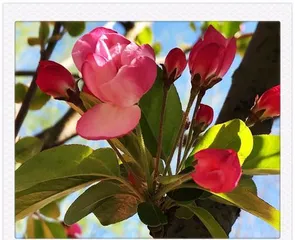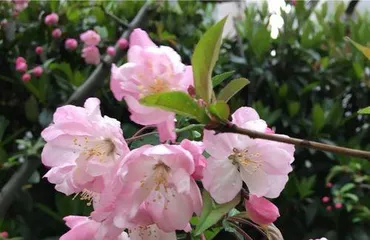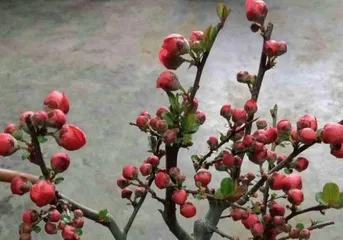The flowering crabapple is a common ornamental garden plant, often found in gardens, parks, and squares. With its lush foliage and abundant flowers, it is one of the most beloved ornamental plants by many. However, as temperatures rise, many people encounter a problem: their flowering crabapples are looking less attractive, becoming less upright, and in some cases, even dying. What is the reason for this? Today, let's explore the question together—Is the flowering crabapple afraid of the sun?

The Secret to Making Flowering Crabapples Bloom in the Sun
If you want your flowering crabapple to bloom in the sun, the first thing to know is that it is a plant that loves plenty of sunlight. Only with sufficient sunlight can the flowering crabapple perform photosynthesis, absorb nutrients, and grow vigorously. However, the flowering crabapple has its own "temperament"; for instance, it prefers a cool environment, has strong shade tolerance, and is not well-adapted to harsh, direct sunlight.
Summer Heat Protection Tips for Flowering Crabapples
Summer is a relatively hot season, and during this time, the flowering crabapple needs protection from the heat. Generally speaking, when the temperature rises above 28°C, the flowering period of the crabapple will be shortened, causing flowers to drop and even leading to wilting. We should try to plant the flowering crabapple in a cool, shaded area, or use measures like shade nets to lower the temperature.

How to Choose a Suitable Planting Location
The growth of a flowering crabapple is closely related to its location. First, you need to choose suitable soil and a well-drained site. Try to keep the crabapple in a suitable environment, such as a north-facing or shaded area, to avoid direct, intense sunlight. You should choose the right location based on your planting needs; for example, it can be grown indoors or outdoors.
The Light Requirements of Flowering Crabapples
The flowering crabapple has high light requirements. If there is a lack of light, the leaves will turn yellow, and in severe cases, it will affect the growth of flower buds. However, excessive sunlight can also have a negative impact on the crabapple, affecting its growth and flowering. We need to properly manage the relationship between the flowering crabapple and sunlight.
How to Protect Flowering Crabapples
Protecting a flowering crabapple is actually a very comprehensive task. In addition to choosing a suitable planting location, it also requires timely watering, fertilizing, and other care. Furthermore, during the crabapple's growth period, you should regularly clear surrounding weeds to avoid affecting its growth.

Watering Flowering Crabapples in a Timely Manner During Summer
Summer temperatures are high, and the flowering crabapple's demand for water is also relatively high. In the summer, we need to water the crabapple promptly to ensure it has an adequate water supply. However, be careful not to overwater, as this can lead to root suffocation.
How to Fertilize Correctly
Fertilizing is also an important part of protecting a flowering crabapple. During the growing season, we can use different types of fertilizer. Generally speaking, organic and compound fertilizers are more suitable for flowering crabapples. Also, the frequency of fertilization should be moderate; do not fertilize too frequently or excessively, as this will affect the crabapple's growth and flowering.
The Correct Pruning Method
Pruning is the final step in protecting a flowering crabapple. Improper pruning will affect the crabapple's growth. We need to choose the correct pruning method to ensure that dead or pest and disease-damaged parts are removed.
As a common ornamental garden plant, the flowering crabapple requires special attention to the effects of sunlight and temperature during its growth period. To allow the flowering crabapple to fully display its beauty, we need to protect it in various ways. If you have any ideas or suggestions, feel free to leave a comment in the section below.